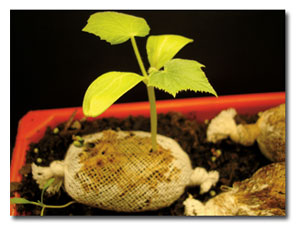When is a braid more than just a braid? Atkins & Pearce Inc. (A&P) – a Covington, Ky.-based braided textile, yarn and cord manufacturer with a history going back 191 years – has been turning braids into some very specialized products for a wide range of highly technical applications.
“Our quest is to find the intersection between textiles and (fill in the blank),” said Jeramie Lawson, director of new product development at A&P’s Research & Development Center, where teams comprising chemists, engineers, machine designers, fiber experts and market developers work on diverse projects. “The blank could be agriculture, medical devices, the environment, alternative energy, functional coating, storm protection – the possibilities are endless,” Lawson
added. Examples include a lightweight hybrid cable system for a wind energy project, a braid used in a desalination filtration system and a high-pressure hose for transferring fluids between submarines linked together in deep ocean waters, among other products.
 The flexible, loose construction of Atkins & Pearce’s reforestation pods allows a
The flexible, loose construction of Atkins & Pearce’s reforestation pods allows a
seedling’s roots to grow through the pod into the soil and the stalk to emerge through the
top.One current project involves braided seed pods and seed tapes designed for reforesting barren areas such as fire- or storm-ravaged land, strip mines or logging sites; and also for commercial landscaping projects, Christmas tree farms, erosion control and planting on steep embankments. Offering an alternative to transplanting seedlings grown in plastic containers, these biodegradable cotton textiles contain a protective, nutrient-rich environment in which seeds can germinate and
get a good start regardless of the harshness of the external environment. The pod can be as small as a marble or as large as a basketball, while the tape is a sleeve-like structure. To slow the
pod’s decay – as when the seedling needs additional time to develop in utero, as it were – wax additives can be applied to the cotton as temporary waterproofing.
With the growth medium contained within the pod or tape, there is no need to dig a hole to set the seedling. The pod can be dropped onto the land from an airplane or truck bed, saving considerable time and labor. The pod’s flexible construction allows the seedling to work its way
out of its “cocoon” as well as develop a healthier, denser root system than one confined in a hard container, Lawson said. “After the fabric decays, the medium remains as a mound of highly fertilized soil containing hydroponic crystals to make it more water-absorbent than other soils,” he added.
Dr. Daniel Karl Struve, professor, horticulture and crop science, College of Food, Agricultural and Environmental Sciences, The Ohio State University, is studying the root formation of red oak seedlings grown in pods. The plants are now 6 to 9 inches tall, but it will be several
months before the root systems develop the air-root-pruned lateral roots that help stabilize the trees, as well as absorb ground-surface water and nutrients. “We assume they’ll behave like other air-root-pruned systems,” Struve said. The improved root development and reduced stress on the young trees are expected to promote increased survival rates over traditional reforestation methods.
For more information about Atkins & Pearce’s research and development capabilities,
contact Jeramie Lawson (859) 512-2795; jeramie.lawson@atkinsandpearce.com.





